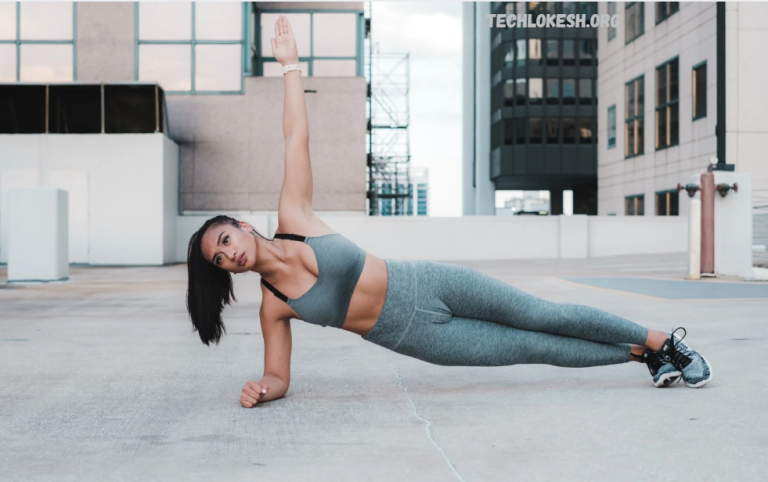Building a strong core goes beyond a toned stomach. Core muscles, including the abdominals, obliques, lower back, and hips, serve as the foundation for almost every movement.
Core exercises are not just for athletes. Anyone benefits from simple, effective movements in their routine. These exercises engage multiple muscle groups at once, building stability, endurance, and practical strength.
Why Core Strength Is Essential
Before diving into exercises, it’s important to understand why core strength is so crucial:
Improves Posture
A strong core supports your spine, allowing you to maintain proper alignment. Good posture reduces the risk of chronic back pain and joint stress.
Enhances Athletic Performance
Most athletic movements—from running and jumping to swimming and cycling rely on a strong and stable core. Core strength improves power transfer, agility, and overall performance.
Reduces Risk of Injury
Weak core muscles increase the likelihood of lower back injuries. Strengthening your core stabilizes your spine and pelvis, protecting you during strenuous activities.
Supports Daily Activities
Lifting objects, bending, twisting, or simply standing for extended periods becomes easier and safer with a solid core foundation.
Boosts Functional Fitness
Functional fitness involves exercises that mimic real-life movements and activities. Core training ensures that your body works efficiently and safely during daily tasks.
Anatomy of the Core
The core is a group of muscles that stabilize and move the trunk. Knowing the anatomy helps you target exercises well:
- Rectus Abdominis: Commonly known as the “six-pack,” it flexes the spine and supports trunk movements.
- Obliques (Internal and External): Located on the sides, they rotate and laterally flex the spine.
- Transverse Abdominis: A Deep abdominal muscle that acts like a corset to stabilize the spine.
- Erector Spinae: Muscles along the spine that extend and rotate the back.
- Pelvic Floor Muscles: Support organs and contribute to core stability.
- Multifidus: Deep spinal muscles that stabilize vertebrae during movement.
Top Core Strengthening Exercises
Here is a list of core exercises, organized by beginner, intermediate, and advanced levels. These require minimal equipment, ideal for home or gym workouts.
Plank Variations
Planks are a foundational exercise for building core stability and strength.
Standard Plank
- Begin in a forearm plank, with your elbows under your shoulders.
- Align your body from head to heels.
- Engage abs, glutes, and shoulders.
- Hold for 30–60 seconds.
- Benefits:
- Improves core endurance
- Strengthens shoulders and back
- Enhances stability
Side Plank
- Lie on your side, elbow under your shoulder.
- Raise hips to form a straight line.
- Hold for 20–45 seconds per side.
- Benefits:
- Targets obliques
- Improves lateral stability
- Enhances posture
Plank with Shoulder Tap
-
- Start in a high plank position.
- Lift one hand to tap the opposite shoulder.
- Alternate sides without rotating your hips.
- Benefits:
- Engages deep core muscles
- Improves balance and coordination
Crunch Variations
Crunches are a classic abdominal exercise that targets the rectus abdominis.
Basic Crunch
-
- Lie on your back, knees bent, feet flat.
- Place your hands behind your head or on your chest.
- Lift shoulders, engaging your core.
- Lower slowly without touching the floor.
- Benefits:
- Strengthens upper abs
- Improves spinal flexion control
Bicycle Crunch
-
- Lie on your back, hands behind your head.
- Raise knees to 90 degrees.
- Twist torso, bringing right elbow to left knee as you extend right leg.
- Alternate sides with controlled motion.
- Benefits:
- Engages obliques and rectus abdominis
- Improves rotational stability
Reverse Crunch
- Lie on your back, hands at your sides.
- Lift legs to the ceiling, knees bent.
- Curl your hips up, engaging lower abs.
- Benefits:
- Strengthens lower abs
- Reduces lower back strain
Read Also: Celebrate in Style – Birthday & Wedding Templates
Anti-Rotation and Stability Exercises
These exercises engage deep core stabilizers and improve balance.
Dead Bug
- How to Perform:
- Lie on your back, arms up, knees bent 90 degrees.
- Lower one leg and opposite arm, keeping the back on the ground.
- Return to start; alternate sides.
- Benefits:
- Activates deep core muscles
- Improves spinal stability
- Reduces risk of lower back injury
Pallof Press
- Stand sideways to a band anchored at chest height.
- Hold the band with both hands, press straight ahead.
- Resist rotation as you extend and return arms.
- Benefits:
- Anti-rotation training
- Strengthens obliques and transverse abdominis
- Improves overall stability
Functional Core Movements
Functional movements mirror real-life activities and train the core dynamically.
Russian Twists
- How to Perform:
- Sit with knees bent, heels up, torso reclined.
- Hold the weight or ball with both hands.
- Twist torso side to side, keeping core engaged.
- Benefits:
- Strengthens obliques
- Improves rotational power
- Enhances balance
Mountain Climbers
- How to Perform:
- Start in a high plank.
- Drive one knee to the chest, then quickly switch.
- Stay tight in your core throughout.
- Benefits:
- Improves cardiovascular fitness
- Engages core, shoulders, and legs
- Enhances agility
Medicine Ball Slams
- Stand feet shoulder-width apart, holding the ball overhead.
- Slam the ball to the floor explosively, engaging the abs and hips.
- Catch the ball on rebound and repeat.
- Benefits:
- Builds explosive core strength
- Engages the upper and lower body
- Improves power and coordination
Lower Back Focused Core Exercises
A balanced core includes strong lower back muscles to reduce the risk of pain and injury.
Superman Exercise
- Lie face down, arms extended forward.
- Lift arms, chest, and legs off the floor.
- Hold briefly, then lower slowly.
- Benefits:
- Strengthens erector spinae and glutes
- Improves posture and spinal extension
Bird Dog
-
- Start on hands and knees with neutral spine.
- Extend right arm forward, left leg backward.
- Hold, then switch sides.
- Benefits:
- Enhances balance and coordination
- Strengthens deep spinal stabilizers
- Improves overall core stability
Tips for Effective Core Training
- Focus on Quality Over Quantity:
Proper form is crucial for engaging the right muscles and avoiding injury. - Engage Your Core Constantly:
Think about drawing your belly button toward your spine during every exercise. - Breathe Correctly:
Exhale during exertion and inhale during relaxation. Controlled breathing enhances performance and stability. - Progress Gradually:
Increase duration, reps, or resistance over time to challenge your core safely and effectively. - Incorporate Variety:
Mix static, dynamic, rotational, and anti-rotation exercises for complete core development. - Recover and Stretch:
Core muscles need recovery. Include stretches for abs, obliques, and lower back to maintain flexibility.
Common Mistakes to Avoid
- Overusing the Neck During Crunches: Keep the neck relaxed to prevent strain.
- Sagging Hips in Planks: Maintain a straight line from head to heels.
- Neglecting the Lower Back: A balanced core includes strong back muscles.
- Rushing Movements: Controlled motions effectively activate muscles.
- Skipping Warm-Up: Always warm up to prepare your muscles and joints.
Frequently Asked Questions
How long before I see results?
With consistent effort, most people notice improvements in strength and posture within 4 to 6 weeks. Visible muscle definition may take longer.
Are crunches the best way to strengthen the core?
Crunches target the abs but don’t engage the entire core. Planks, leg raises, and rotational movements are more effective for full core strength.
Can core exercises help with back pain?
Yes. Strengthening the core can stabilize the spine, improve posture, and reduce strain on the lower back.
Should beginners start with advanced exercises?
No. Start with basic movements, such as planks, bridges, and bird dogs.
How can I make core workouts more effective?
Focus on proper form, controlled movements, and breathing. Consistency and gradual progression are essential for developing genuine core strength.
Conclusion
A strong core is more than just aesthetics; it is key to achieving functional fitness, enhancing athletic performance, and preventing injuries. Include these core exercises in your routine to build a powerful, stable, and resilient midsection.

